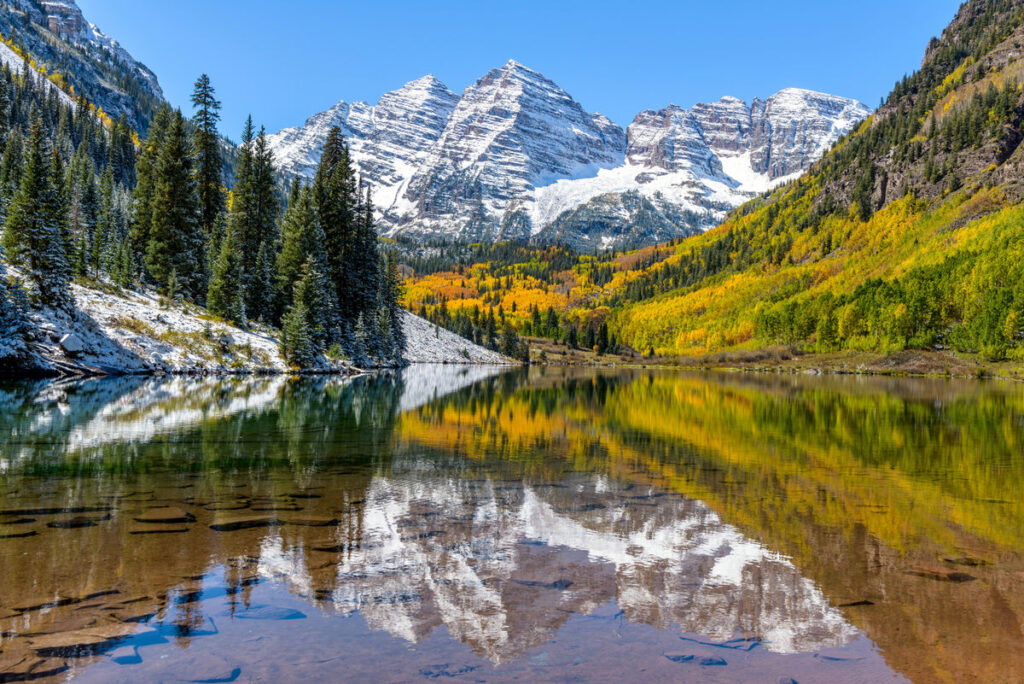
Ocean views often get the glory. But lakes offer some of
the most picturesque
natural landscapes in the US.
From nature preserves to mist-shrouded mountains, lush
forests and turquoise lagoons, these waters beckon visitors with their stunning
scenery. The regions also offer hiking, camping, swimming, kayaking, boating
and fishing. But one thing they all have in common – they are gorgeous, and
many are under-the-radar.
Though we would normally count California and Nevada’s Lake
Tahoe and Oregon’s Crater Lake in the mix, we’re sharing some incredibly
stunning lakes across the country you may not be as familiar with.
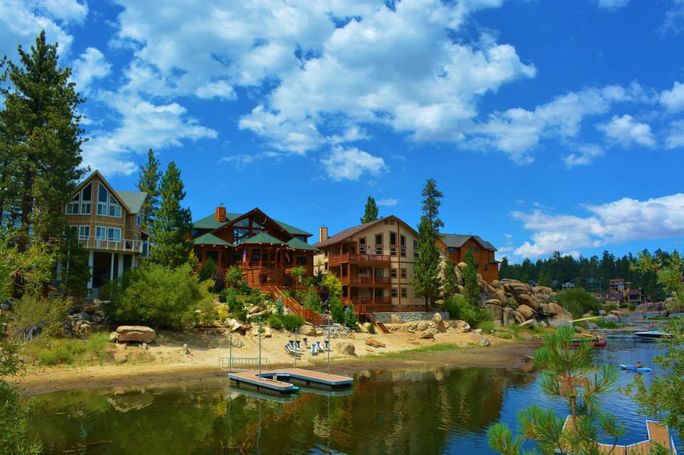
Big Bear Lake, California (Photo Credit: Noreen Kompanik)
Big Bear Lake, California
This scenic reservoir nestled in Southern California’s San
Bernardino Mountains about two hours from Los Angeles sits at around 6,743 feet
in elevation. The lake stretches roughly seven miles long with a maximum depth
of 72 feet.
The water is a deep azure blue and crystal clear thanks to
low levels of nitrogen and phosphorus that keep algae growth in check. With 300
days of sunshine per year, summer temps averaging 77 degrees Fahrenheit, winter
snowfall and vibrant autumn scenery, this lake destination is a jewel. Outdoor
water sports include boating, paddleboarding, fishing, kayaking, jet skiing and
parasailing.
Clear Lake, Oregon
Oregon’s Crater Lake is well-known, but the Pacific Northwest
region offers another incredible but less-known alpine gem called Clear Lake.
The lake is renowned for its remarkably translucent, crystalline
waters and a thriving submerged underwater forest providing scuba divers the
opportunity to explore one of the most exceptional freshwater diving spots in
the U.S. with visibility up to 100 feet in some places. Other activities here
include snorkeling, kayaking, canoes, fishing and hiking. Since no motorized
boats are allowed on the lake, the experience is truly peaceful and serene.
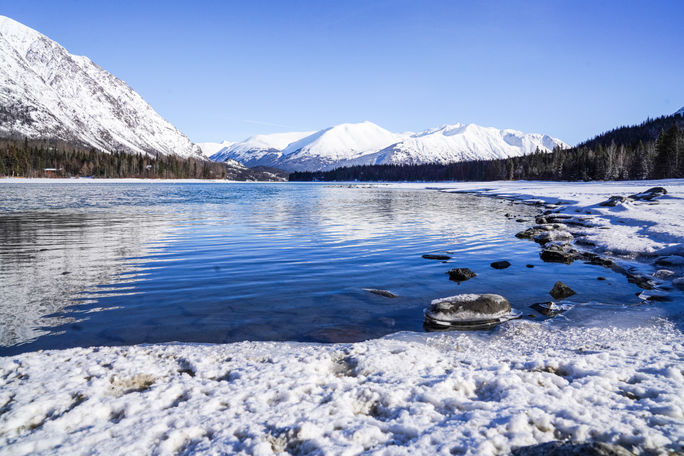
Kenai River, Alaska. (Photo by Lauren Breedlove)
Hidden Lake, Alaska
Situated within the Kanai National Wildlife Refuge just
south of Anchorage, Hidden Lake is a 1500-acre serene body of water formed by glacial
and tectonic activity in the ancient channel of the Kanai River. The secluded
lake is surrounded by dense spruce forests filled with moose, bear and bald
eagles.
The lake is renowned for its trout, Arctic char and salmon
fishing and ideal for canoeing or kayaking as there’s not the motorboat traffic
you’ll see on Alaska’s bigger lakes. Even in the winter months you’ll find ice
anglers here with their lines when the lake freezes over.
Lake Dora, Florida
Spanning almost 4.400 acres, Lake Dora in Lake County
Florida is part of the esteemed Harris Chain Lakes in large part to the
historic lakeside town of Mount Dora on its eastern shore. Since the late
1800s, Lake Dora has attracted fishermen, hunters and tourists.
The awe-inspiring lake offers a peaceful escape, perfect for
boating, lakeside picnics and sunset views. Guided eco-tours under
2,000-year-old trees are quite an impressive experience.
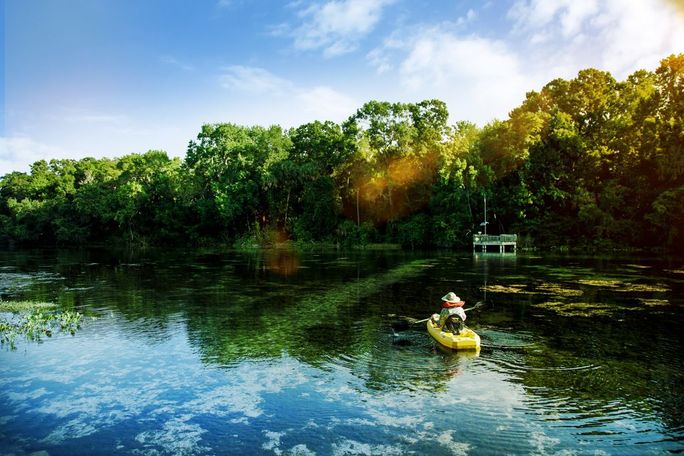
Eco-Tourism on Lake Dora (Photo Credit: Discover Lake County)
Lake Jocassee, South Carolina
A stunning sapphire, crystal-clear reservoir in the Appalachian
foothills of northwestern South Carolina near the North Carolina border, Lake
Jocassee is known for its deep, cool waters, dramatic mountain scenery and
hidden waterfalls, three that cascade directly into the lake.
The 9,000-acre reservoir is part of the Jocassee Gorges
region, a UNESCO Biosphere Reserve which National Geographic called a “destination
of a lifetime” for its biodiversity. Popular activities include boating and
kayaking to explore hidden coves and waterfalls, scuba diving (as visibility
can exceed 50 feet), fishing and hiking.
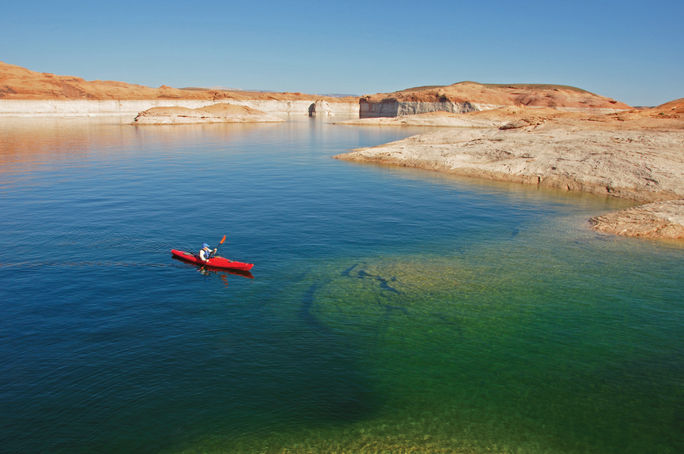
Lake Powell, Arizona (Photo Credit: Ryan Bonneau & AOT)
Lake Powell, Arizona
As one of the largest man-made reservoirs in the U.S., this
striking body of water straddles the border between northern Arizona and
southern Utah. The lake is named after John Wesley Powell, a Civil War veteran
and explorer who led the first scientific expedition down the Colorado River in
1869.
Lake Powell is known for its 2,000 miles of shoreline, red
rock canyons, dramatic cliffs and stunning range of colors due to its varied water
temperature and depth. Boating, houseboating, kayaking, paddleboarding,
fishing, swimming and hiking are popular here.
Lake Taneycomo/Table Rock Lake, Branson, Missouri
Branson boasts three lakes in the region, two incredibly
picturesque. Lake Taneycomo runs though the town of Branson with a downtown
landing area with a strolling path to watch the boats go by. The lake also
offers water cruise tours and fishing from several docks.
Table Rock Lake is one of the cleanest, scenic and popular
lakes in Missouri. With over 800 miles of shoreline, it’s impossible to explore
the entire lake on one visit. With the Showboat Branson Belle dinner cruise
tour, visitors can enjoy the scenery, a musical show, and a lovely dinner in
the evening.
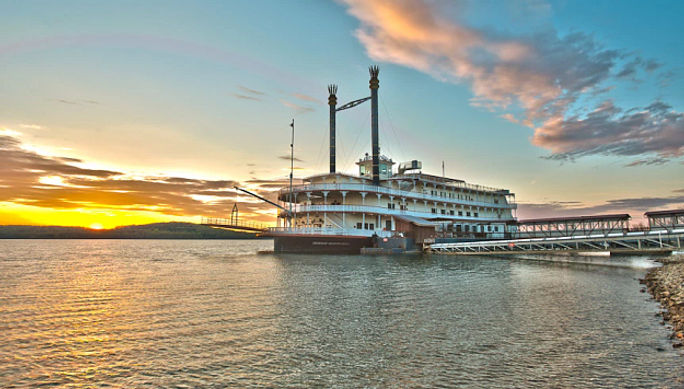
Sunset on Table Rock Lake (© Explore Branson)
Lake Washington/Lake Sammamish, Bellevue Washington
Bellevue, Washington is tucked between two stunning lakes.
Lake Washington, the largest in King County, is ideal for boating,
kayaking, and fishing along its sparkling waters, with scenic parks and
waterfront trails perfect for biking or leisurely strolls. From the water,
cruisers can take in the impressive Bellevue skyline and admire the luxurious
lakeside estates known as “Millionaires’ Row.”
Lake Sammamish provides a quieter, more relaxed setting with
calm waters popular for paddleboarding and sandy shores perfect for swimming,
picnicking, and gathering with friends.
Maroon Lake, Colorado
Situated at over 9,500 feet, Maroon Lake in Colorado’s
Maroon Bells-Snowmass Wilderness is one of the most iconic and photographed
scenes in the Rockies. The lake, formed during the last ice age, is located
about nine miles west of Aspen but from May to early November, access is by
shuttle or car with a reservation to limit access to the area.
Maroon Lake is a must-see blend of breathtaking vistas and
rich alpine ecosystems. Fall foliage peaks in late September, and the lake is
known for its wildlife sightings and colorful wildflower meadows. Hiking and
fly-fishing are popular outdoor activities here, along with snowshoeing and
cross-country skiing in the winter.
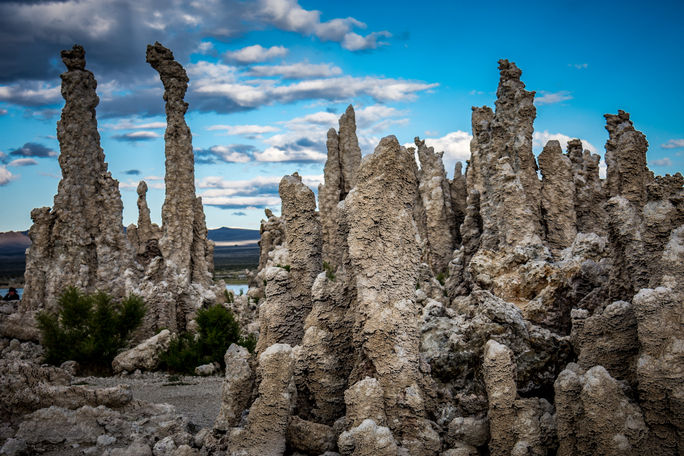
PHOTO: The limestone formations known as the Tufa Towers at Mono Lake in California (photo via m01229/Flickr).
Mono Lake, California
Definitely one of the strangest and unique lakes in the
U.S., Mono Lake, located near the Sierra Nevada mountains and close to the
entrance of Yosemite National Park is fascinating.
First of all, it’s a saline soda lake, two-to-three times
saltier than the ocean because it has no natural outlet. It is also one of the
oldest lakes in North America. But what makes this body of water so beguiling
is its tufa towers, bizarre limestone formations that resemble an alien-like
landscape. Popular activities include birdwatching, photography, kayaking and
nature walks.
Moosehead Lake, Maine
Spanning almost 75,000 acres, Moosehead Lake is one of the
largest freshwater lakes in the U.S. and the largest in Maine. A favorite with
travelers, the lake has the benefit of being much warmer than Maine’s chilly
seashore and is ideal for swimming, offering stunning views of Mount Kineo and
proximity to the charming town of Greenville.
In his book, “The Maine Woods,” Henry David Thoreau even
mentioned the region’s vast beauty in as he was being guided by Native
Americans. Activities here include hiking, wildlife viewing, moose tours,
fishing, kayaking and other outdoor adventures.
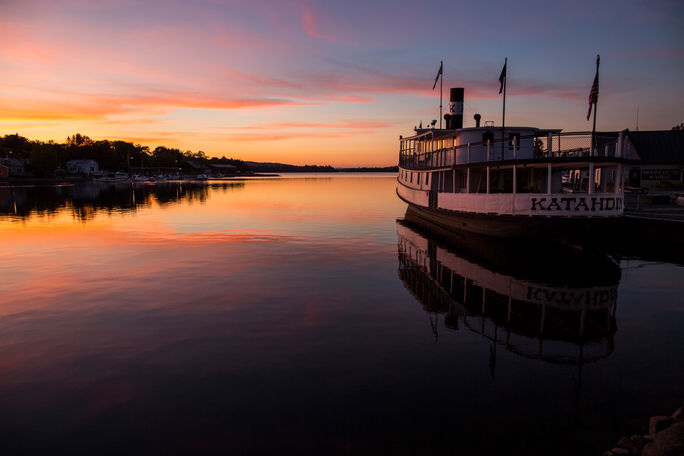
Moosehead Lake, Maine (Photo Credit: Visit Maine)
Navajo Lake, Utah
Located atop Cedar Mountain just east of Cedar City, Utah,
this pristine lake was originally known to the Paiute people as “Pa-Cu-Ay,”
meaning Cloud Lake. The skies are clear and the air is crisp at this 9,000-foot
elevation. Formed by an ancient lava flow, the picturesque lake is home to
hiking and mountain bike trails winding through lava fields alongside the lake.
A nearby hiking trail (Cascade Falls) leads to a stunning waterfall.
Navajo Lake is located an hour drive from Bryce Canyon and
an hour drive to Zion National Park, making it a worthwhile addition to a national parks visit.
For the latest travel news, updates and deals, subscribe to the daily TravelPulse newsletter.

